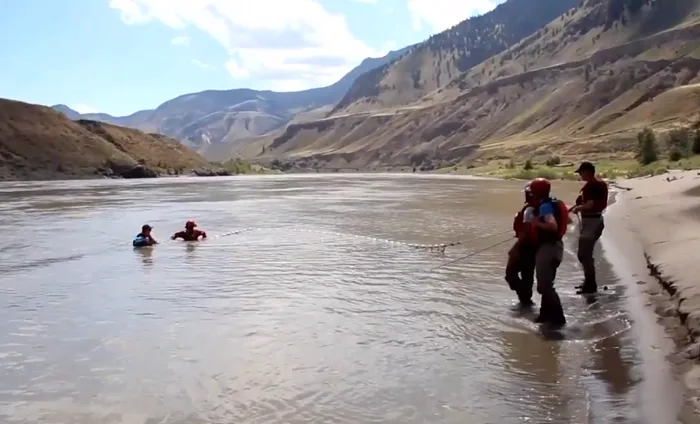
Officials race to remove debris creating BC salmon bottleneck
In June, a landslide was discovered in B.C.'s Fraser River. It created a waterfall in a remote area north of Lillooet that threatens to prevent salmon from reaching their spawning grounds.
More than two million fish are expected to encounter the blockage, which likely occurred in October or November.
Officials have airlifted thousands of fish over the barrier and are working to create a natural passage but aren't sure if they'll finish their work on time, according to a recent Canadian Press (CP) report.
Al Magnan, environmental lead for the team working with the fish, told CP the conditions are changing "daily."
On Monday, about 300 logs were cleared from a back eddy downstream of the waterfall. Officials are also removing boulders and blasting rocks.
Magnan says there appears to be a steadily-mounting bottleneck of fish downstream but that doesn't necessarily mean they are doomed.
"From a migration point of view, it's never linear. There are natural delays in migration and natural barriers that take time," he told CP.
The salmon, primarily chinook and sockeye, are scheduled to reach the site over the next few weeks, with some sockeye reported just two kilometres away from the barrier.
If they can't make it past the barrier, a "ladder" is onsite and can be installed to help them move up the waterfall.
The salmon "only have three to four weeks to complete their migration and spawn," Scott Hinch, director of the Natural Resources Conservation Program at the University of British Columbia, told The Weather Network. Hinch says all Pacific salmon die after spawning, and if they can't spawn, they die anyway.
If they can't reach their spawning grounds, they will sometimes retreat to another locale or remain in place until they succumb to exhaustion.
Hinch says the timing of the slide isn't ideal, with several types of salmon recently listed as "threatened" or "endangered."
Source: Canadian Press (via CBC)











